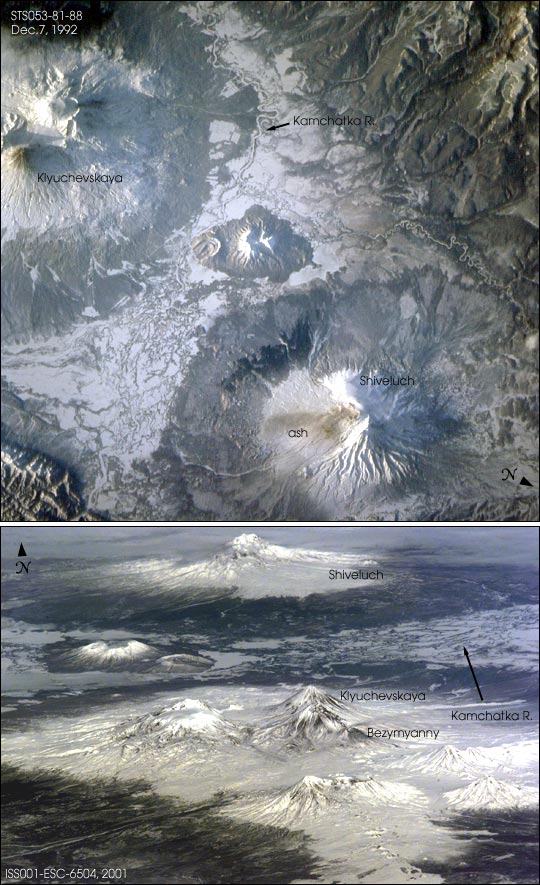


Shiveluch volcano anchors the northern end of a volcanic chain of more than 100volcanoes covering the Kamchatkan Peninsula. It is one of the most active volcanoes along the Pacific Rim.
Astronauts took both of these very different images of Shiveluch and other Kamchatkan volcanoes. The first image was taken in 1992, and looks straight down from orbit onto Shiveluch’s irregular outline. The Kamchatka River wanders between Shiveluch to the north and Kamchatka’s most active volcano, Klyuchevskaya. Low sun and snow cover highlight the volcano morphology—the south and southeastern flank of Shiveluch were blown off in an earlier major eruption. The crater is partly covered by a smooth-looking apron of debris. In this image, a thin dusting of ash on the surface of the snow indicates that Shiveluch had #147;burped” just prior to being photographed by astronauts.
More recently, astronauts aboard the International Space Station Alpha looked north toward Shiveluch’s scarred southern slope to get a different perspective of the impressive cluster of volcanoes in the Klyuchevskaya group and Shiveluch. The oblique views were acquired because these volcanoes (at 56.6 degrees latitude) lie north of the station’s orbital track, which reaches a maximum latitude of 51.6 degrees. Space Station crewmembers will continue to observe these and other volcanoes for signs of eruptions.
Photograph number STS053-81-88 was taken nearly 10 years ago from the Space Shuttle on December 7, 1992. Digital photograph number ISS001-ESC-6504 was taken in early 2001 from the International Space Station Alpha. Both images were provided by the Earth Sciences and Image Analysis Laboratory at Johnson Space Center. Additional images taken by astronauts and cosmonauts can be viewed at the NASA-JSC Gateway to Astronaut Photography of Earth.